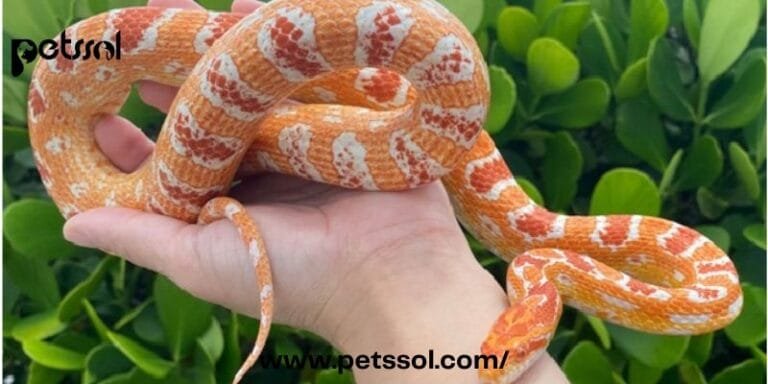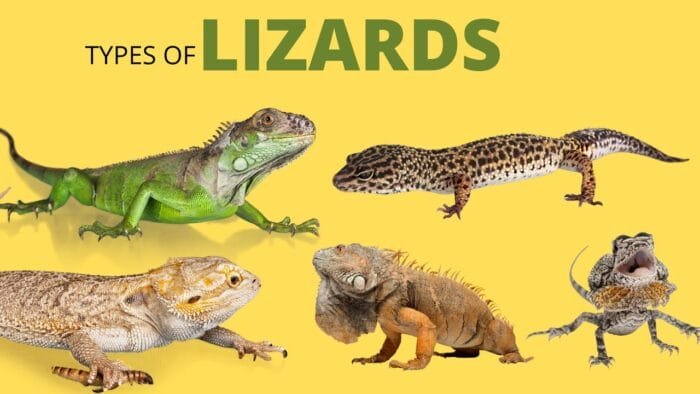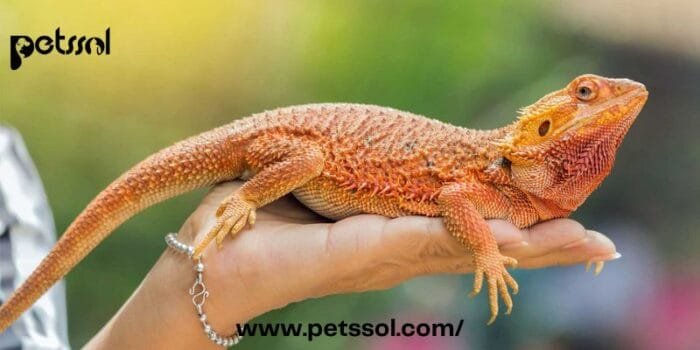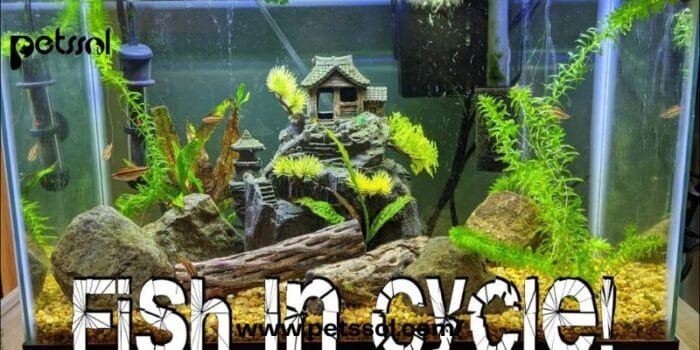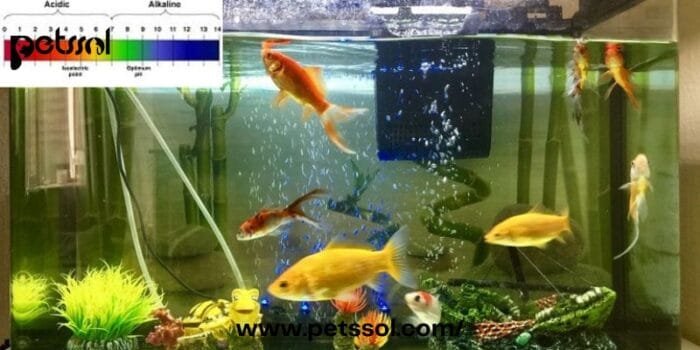Types of Pet Snakes: Snakes have been gaining popularity as pets in recent years, thanks to their low-maintenance nature and unique appeal. Whether you’re a first-time reptile owner or an experienced handler, choosing the right type of pet snake is crucial to ensuring a successful and enjoyable experience. From small and docile species to larger, more exotic varieties, this guide covers the top types of pet snakes that make excellent companions.
-
Table of Contents
ToggleCorn Snakes (Pantherophis guttatus)
Corn snakes are one of the most popular pet snake choices, especially for beginners. Their calm demeanor, ease of care, and moderate size make them a perfect introduction to snake ownership. Corn snakes come from the southeastern United States and can be found in a variety of colors, including orange, red, yellow, and gray. Their vibrant patterns add to their appeal as pets.
Why They’re Great for Beginners:
- Size: Corn snakes grow to an average length of 2.5 to 5 feet, making them manageable for most people. They don’t require huge enclosures and are relatively easy to handle.
- Diet and Habitat: These snakes thrive on a diet of frozen-thawed mice, making feeding them simple and hassle-free. In terms of habitat, they need a well-ventilated tank with secure locks. Corn snakes are hardy and don’t require overly specific humidity levels or temperatures, which reduces the complexity of their care.
- Lifespan: With a lifespan of 15 to 20 years, corn snakes can be long-term companions, providing years of enjoyment.
Temperament: Known for being docile, corn snakes rarely display aggression, which makes them a safe and friendly choice for families or those new to snake handling.
-
Ball Pythons (Python regius)
Ball pythons are another fantastic option for beginner snake owners. These gentle and manageable snakes are native to Africa and are known for their tendency to curl up into a tight ball when they feel threatened or stressed. Their calm nature makes them a favorite among both novice and intermediate reptile keepers.
Key Qualities:
- Size: Ball pythons grow to be around 3 to 5 feet long, making them easy to handle and house.
- Variety of Morphs: One of the most exciting aspects of ball pythons is their wide variety of morphs, or color patterns. These snakes come in many different color variations, which makes each one unique and aesthetically appealing.
- Diet and Habitat: Like corn snakes, ball pythons primarily eat rodents, such as mice and rats. They thrive in environments with controlled heat, humidity, and a secure hiding spot.
- Lifespan: These snakes can live between 20 to 30 years, making them a long-term commitment.
Ball pythons are excellent for those who want a low-maintenance, long-living pet. Their docile nature and manageable size make them a great choice for anyone looking to own their first snake.
-
California Kingsnakes (Lampropeltis getula californiae)
California kingsnakes are well-known for their striking appearance and bold personality. Their beautiful black and white or brown and cream banded patterns make them stand out in any collection. Although they are typically non-aggressive, these snakes are more active than some other species and can occasionally be defensive when first handled.
Care and Characteristics:
- Size: California kingsnakes grow to around 3 to 4 feet in length, which makes them a bit smaller than ball pythons or corn snakes.
- Diet: Kingsnakes have a varied diet that includes small rodents, birds, and even other reptiles. While their diet is easy to manage, owners should take care not to house them with other snakes due to their potential cannibalistic tendencies.
- Habitat: Kingsnakes are fairly hardy and can adapt to a variety of environmental conditions. They require an escape-proof enclosure and moderate humidity levels.
Temperament: These snakes are more active than others on this list and require consistent handling to remain docile. With regular interaction, they become easy to manage and can be quite enjoyable for owners who like a more engaged pet.
-
Garter Snakes (Thamnophis sirtalis)
Garter snakes are small, active snakes that make for a dynamic pet. These snakes are native to North America and are easily recognizable due to the colorful stripes running down their body. Garter snakes are ideal for those who want a more interactive pet as they are quite active and curious.
Care and Feeding:
- Size: Garter snakes are one of the smaller species on this list, typically growing between 1.5 and 3 feet.
- Diet: These snakes have a diverse diet, including fish, amphibians, and small rodents. Unlike other pet snakes that solely consume rodents, garter snakes offer a bit more variety when it comes to feeding options.
- Habitat: Garter snakes require both dry and moist areas in their enclosure to mimic their natural environment. They are also very active, so providing enough space for them to move around is essential.
While garter snakes are smaller and more active than other pet snakes, they are still fairly easy to care for and provide an exciting, dynamic experience for their owners.

-
Milk Snakes (Lampropeltis triangulum)
Milk snakes are another popular pet species, known for their beautiful patterns and coloration. With their red, black, and yellow bands, milk snakes often resemble the venomous coral snake, but they are non-venomous and completely safe for captivity. They are closely related to kingsnakes and share similar care requirements.
Characteristics:
- Size: Milk snakes grow to an average length of 2 to 4 feet, which makes them easy to handle.
- Diet and Habitat: Like other small snakes, milk snakes primarily feed on small rodents such as mice. They thrive in secure, well-ventilated enclosures and require moderate humidity levels.
- Lifespan: Milk snakes live for about 10 to 15 years, making them a long-term commitment without the decades-long lifespan of larger snakes.
Temperament: Milk snakes are generally docile and easy to care for, which makes them an excellent option for beginners. With regular handling, they become accustomed to being held and make a calm and manageable pet.
-
Boa Constrictors (Boa constrictor)
Boa constrictors are among the larger pet snakes, growing up to 13 feet in some cases. While they are not typically recommended for beginners due to their size and space requirements, experienced snake owners often find them to be rewarding pets. Despite their size, boa constrictors are typically calm and can be easily handled with proper care and attention.
Important Considerations:
- Size: Boa constrictors can grow between 6 and 13 feet in length, so they require larger enclosures.
- Diet: These snakes feed on larger prey, including rats, birds, and small mammals. Feeding boas is more complex than smaller snakes, as they require larger food items.
- Habitat: Boa constrictors require a large, well-secured enclosure with controlled humidity and temperature.
Temperament: While they are larger, boa constrictors are known for their docile and calm nature when handled regularly. They are great for experienced owners who want a more impressive snake that still has a manageable temperament.
-
Green Tree Pythons (Morelia viridis)
Green tree pythons are visually stunning snakes with their bright green coloration and arboreal nature. They are better suited for more experienced snake keepers due to their more specific care needs and aggressive tendencies. Native to New Guinea and parts of Australia, these snakes are admired for their beauty but are typically considered a display pet rather than one that is regularly handled.
Key Features:
- Size: Green tree pythons grow to between 4 and 6 feet in length.
- Diet: These snakes primarily eat small rodents, but feeding can be tricky due to their arboreal lifestyle.
- Habitat: They require a tall, vertical enclosure with plenty of branches for climbing, as well as carefully controlled humidity and temperature.
Green tree pythons are beautiful and rewarding to own but are recommended for experienced owners who can provide the specialized care they require.
Conclusion
When choosing a pet snake, it’s important to consider factors such as size, temperament, diet, and habitat needs. For beginners, species like corn snakes, ball pythons, and milk snakes are ideal because of their manageable size and ease of care. More experienced owners may find larger or more exotic snakes, such as boa constrictors and green tree pythons, to be a rewarding challenge. Each species has its unique requirements, and choosing the right snake for your experience level and lifestyle is key to creating a positive relationship with your new pet.
At Petssol, we provide a wealth of information on pet care, including advice on snake habitats, feeding, and health. Visit our website to learn more about caring for your new snake companion and explore our range of helpful resources.

FAQs About Pet Snakes
-
What is the best pet snake for a beginner?
Corn snakes, ball pythons, and milk snakes are considered some of the best pet snakes for beginners due to their docile nature, manageable size, and relatively simple care requirements.
-
How much space does a pet snake need?
The enclosure size depends on the species. Small snakes like corn snakes need at least a 20-gallon tank, while larger snakes like boa constrictors require enclosures of 40 gallons or more.
-
What do pet snakes eat?
Most pet snakes eat small rodents like mice or rats. Species like garter snakes can also eat fish and amphibians, depending on their dietary needs.
-
Are pet snakes safe for families with children?
Yes, species such as corn snakes and ball pythons are typically safe for families with children, as long as handling is supervised and the snake is properly cared for.
-
How long do pet snakes live?
Most pet snakes live for 10 to 30 years, depending on the species. Boa constrictors and ball pythons tend to have longer lifespans, often living up to 30 years in captivity.
-
Do pet snakes need special lighting?
Yes, most pet snakes need heat lamps or under-tank heaters to regulate their body temperature, as snakes are ectothermic and rely on external heat sources.
-
How often do pet snakes need to be fed?
Feeding frequency varies by species and age. Younger snakes may need to eat once a week, while adult snakes can go 10 to 14 days between meals.

